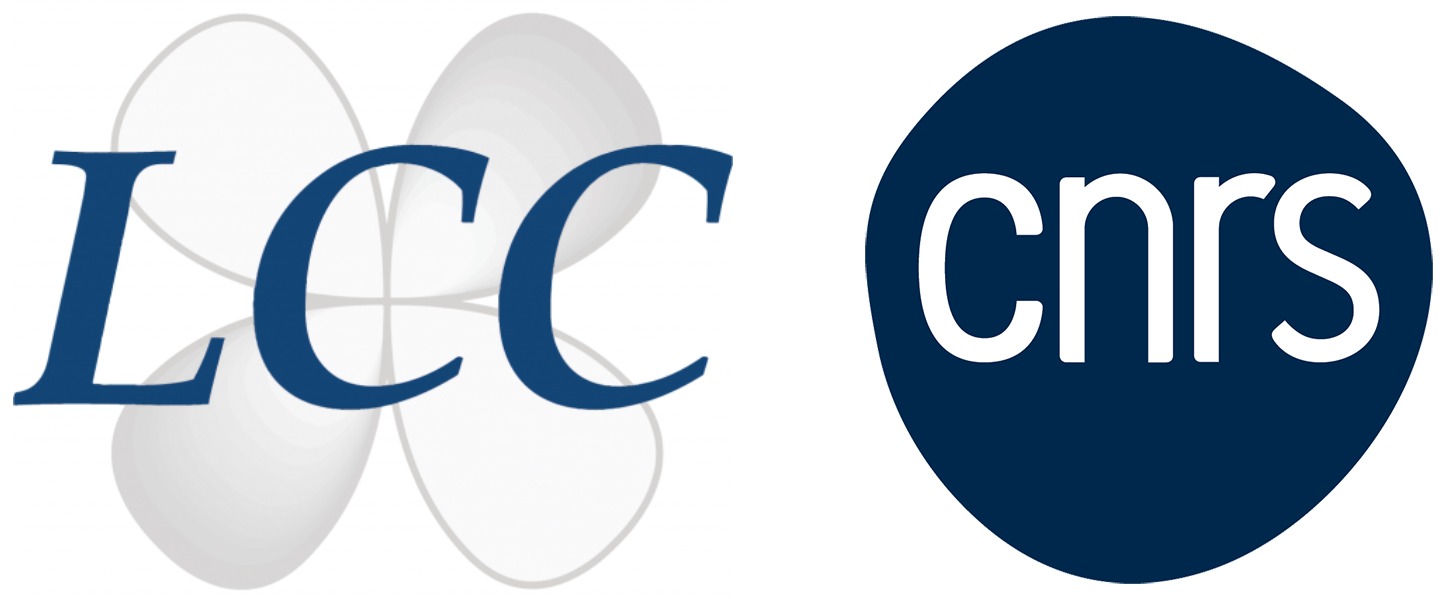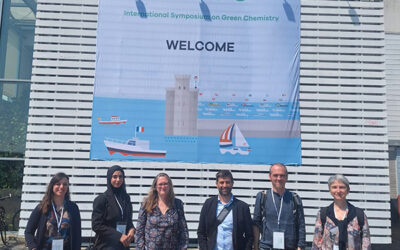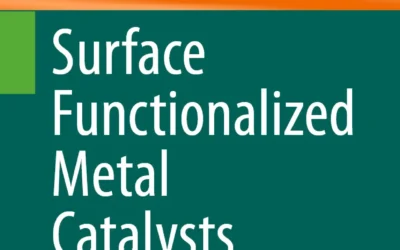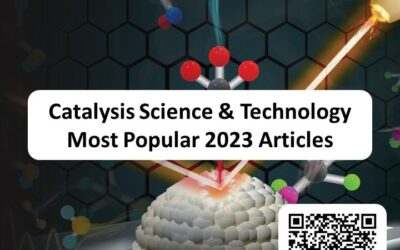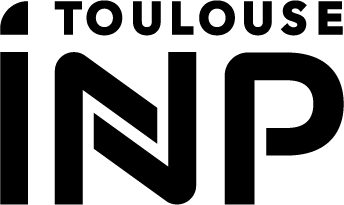LCC
Overview
The research activities of the “Engineering of Metal Nanoparticles” team are focused on the “synthèse contrôlée” of complex nanoparticles and nanomaterials of metals and/or metal oxides, their organization and the study of their chemical and physical properties for applications in various fields. With a contribution in the large area of nanosciences and nanochemistry, our projects concern both the fundamental aspects of the growth of nanoparticles and nanomaterials as well as their applications in different domains such as microelectronics, catalysis, energy or health.
The team has developed an efficient synthesis method, in solution or on support and in mild conditions , to produce nanoparticles of metals or metal oxides from organometallic precursors. The characterization of these nano-objects is performed through the use of a combination of techniques from materials chemistry (high resolution Transmission Electron Microscopy and Scanning Electron Microscopy, X-rays diffraction and X-rays scatterring, EXAFS, …) as well as spectroscopic techniques from molecular chemistry (UV-Visible, Infra-Red, solution and solid-state NMR, Raman…).
We are interested in controlling the growth and the surface chemistry of nano-objects (control of the shape, organization, composition and functionalization of the metallic surface by addition of ligands) as well as in studying the influence of the surface chemistry of nanoparticles on their chemical properties (reactivity) and physical properties (magnetism, optical, electronic…). Our research activities are directed towards applications in diverse domains like catalysis (colloïdal and supported), health (biomedicine), or micro-electronics (conducting metallic layers ). As an example, results from our team led to a transfer of technology in the field of gas sensors.
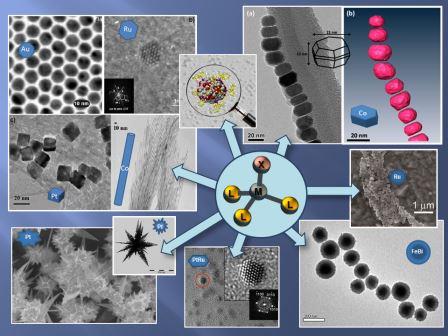
Members of the team
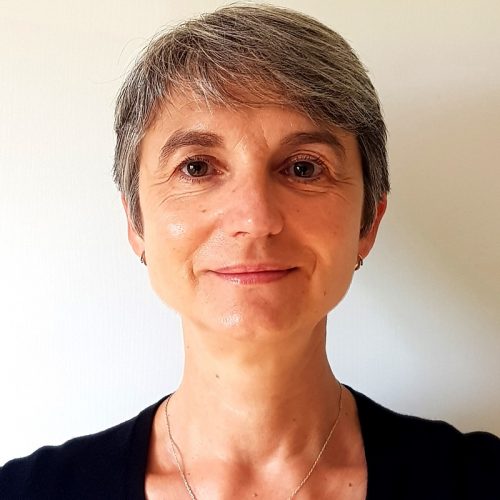
PHILIPPOT Karine
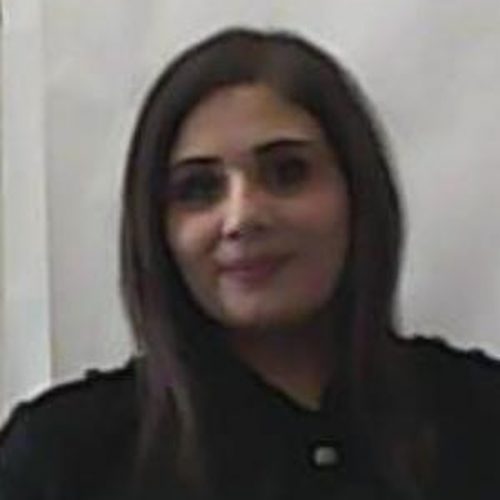
ABOU Chantal
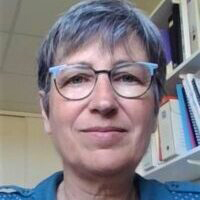
AMIENS Catherine
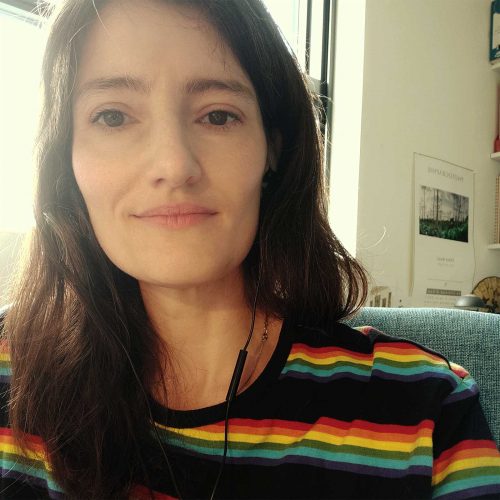
AXET Rosa

DELEUZIERE Maëlle

EDALAT Azadeh
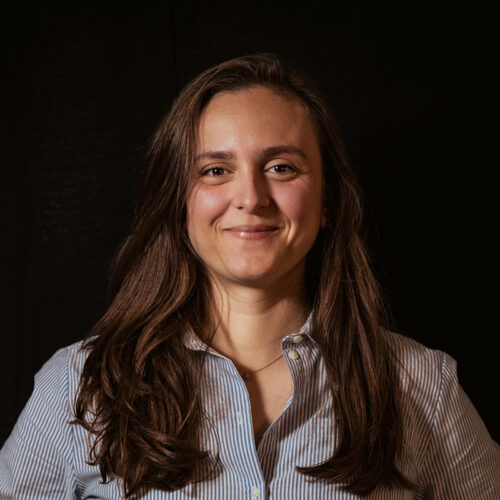
HAIM Lorraine

HUSAINY Fatima
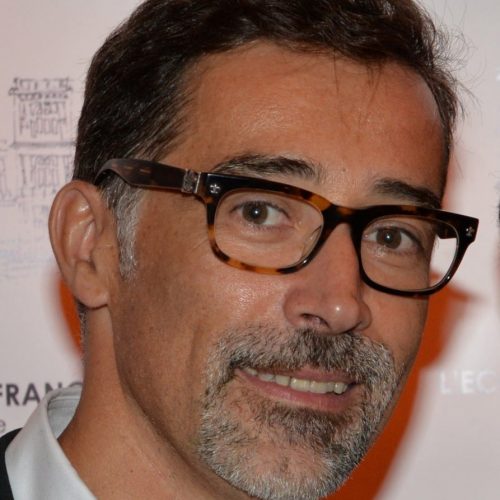
IGAU Alain

JEAN-BART Nicolas

KAZIMOVA Nargiz

LARAMUNOZ Patricia

PUJOL Estelle
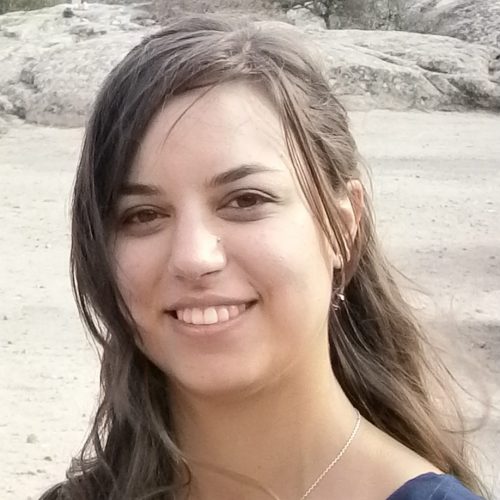
ROMERO Nuria

SHAW Manisha
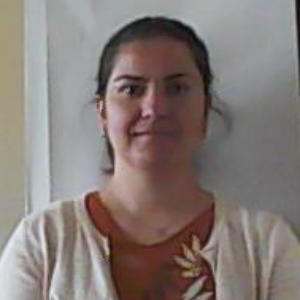
STRAISTARI Tatiana

SUTRA Pierre

ZAMBLE Christian
Research topics
Supported nanocatalysts
Nanoparticles and micro-electronics
Health and nanomedicine: medical imaging and analysis
Nanostructures and energy
Team news
Strong Presence of LCC at the International Symposium on Green Chemistry
The LCC contributed with six oral presentations, reflecting the laboratory’s commitment to ecological transition issues and its influence within the international scientific community.
Book chapter
“Influence of Capping Ligands on Metal-Nanoparticle-Driven Hydrogen Evolution and CO2 Reduction Reactions”
Chapter in “Surface Functionalized Metal Catalysts “
Catalysis Science & Technology Most Popular 2023 Articles
“Highly dispersed Rh single atoms over graphitic carbon nitride as a robust catalyst for the hydroformylation reaction”
An article by Rosa Axet is featured in this issue.
Publications
2025
Luminescence quenching of pyrene-labelled fluorescent dendrons by surface anchoring of ruthenium nanoparticles
González-Gómez R., Vonlanthen M., Bijani C., Amiens C., Rivera E., Philippot K.
Dalton Trans. 2025, 54(19), 7851-7861.
10.1039/D5DT00192G – hal-05065873
Enhanced electrocatalytic hydrogen evolution with bimetallic Ru/Pt nanoparticles supported on nitrogen-doped reduced graphene oxide
Hou H., Cerezo-Navarrete C., Fenoll D., Kraft M., Marini C., Rodríguez-Santiago L., Solans-Monfort X., Martínez-Prieto L. M., Romero N., García-Antón J., Sala X.
Inorg. Chem. Front. 2025,
10.1039/D5QI00451A – hal-05065958
KuQuinone-sensitized cobalt oxide nanoparticles for photoelectrocatalytic oxygen evolution with visible light
Bonetto R., Romero N., Sabuzi F., Forchetta M., Natali M., Signorini R., Bofill R., Francàs L., Gil-Sepulcre M., Rüdiger O., DeBeer S., García-Antón J., Philippot K., Galloni P., Sartorel A., Sala X.
Green Chem. 2025, 27(16), 4352-4368.
10.1039/D4GC06606E – hal-05057683
Computational and experimental insights into single-atom catalysts supported on g-C3N4: Unraveling the superior stability and catalytic activity of Rh in hydroformylation reactions
Monreal-Corona R., Jurado L., Ishikawa H., Gimferrer M., Poater A., Bobadilla L. F., Axet M. R., Posada-Pérez S.
Appl. Surf. Sci. 2025, 698, 163050/1-11.
10.1016/j.apsusc.2025.163050 – hal-05065502
A bifunctional nanostructured RuPt/C electrocatalyst for energy storage based on the chlor-alkali process
Romero N., Gomaa M. M., Esvan J., Rodrigo M. A., Philippot K., Lobato J.
Nanomaterials 2025, 15(7), 506/1-14.
10.3390/nano15070506 – hal-05018596
Synthesis of a hybrid nanomaterial combining silver nanoparticles with water-soluble zinc phthalocyanines [ZnPc(CO2H)4H(COATP)4H@AgNPs]
Tarpaga L., Bakouan Y., Ouédraogo S., Sessouma B., Bayo-Bangoura M., Esvan J., Bayo K., Amiens C.
Bull. Chem. Soc. Ethiop. 2025, 39(4), 713-729.
10.4314/bcse.v39i4.9 – hal-05018594
Effect of nitrogen and phosphorus doping of reduced graphene oxide in the hydrogen evolution catalytic activity of supported Ru nanoparticles
Mallón L., Navarro-Ruiz J., Cerezo-Navarrete C., Romero N., del Rosal I., García-Antón J., Bofill R., Martínez-Prieto L. M., Philippot K., Poteau R., Sala X.
ACS Appl. Mater. Interfaces 2025, 17(4), 6198-6210.
10.1021/acsami.4c15547 – hal-04931941
Non-covalent immobilization of chiral rhodium catalysts on carbon nanotubes for asymmetric hydrogenation
Arora Z., Rais M., Pârvulescu V. I., Philippot K., Durand J., Gouygou M.
ChemNanoMat 2025, 11(2), e202400125/1-11.
10.1002/cnma.202400125 – hal-04931851
2024
Influence of Capping Ligands on Metal-Nanoparticle-Driven Hydrogen Evolution and CO2 Reduction Reactions
Martí G., Lozano-Roche A., Romero N., Francàs L., Philippot K., Bofill R., García-Antón J., Sala X.
in Topics in Organometallic Chemistry. Surface Functionalized Metal Catalysts, L. M. Martínez-Prieto (Ed.), Springer International Publishing: Cham, 2024, vol. 75, pp. 105-132. (978-3-031-73841-8).
https://doi.org/10.1007/3418_2024_116
https://hal.science/hal-04821235
Rh nanoparticles confined in triphenylphosphine oxide-functionalized core-crosslinked micelles with a polyanionic shell: Synthesis, characterization, and application in aqueous biphasic hydrogenation
Abou-Fayssal C. J., Schill L., Poli R., Riisager A., Manoury E., Philippot K.
Reactive and Functional Polymers 2024, 205, 106061/1-8.
https://doi.org/10.1016/j.reactfunctpolym.2024.106061
https://hal.science/hal-04725286
Colloidal bimetallic RuNi particles and their behaviour in catalytic quinoline hydrogenation
Cardona-Farreny M., Ishikawa H., Odufejo Ogoe A. O., Mallet-Ladeira S., Coppel Y., Lecante P., Esvan J., Philippot K., Axet M. R.
ChemPlusChem 2024, 89(12), e202400516/1-10.
https://doi.org/10.1002/cplu.202400516
https://hal.science/hal-04703442
Synthesis, properties, and electrochemistry of bis(iminophosphorane)pyridine iron(II) pincer complexes
Sánchez López N., Nuñez Bahena E., Ryabov A. D., Sutra P., Igau A., Le Lagadec R.
Inorganics 2024, 12(4), 115/1-13.
https://doi.org/10.3390/inorganics12040115
https://hal.science/hal-04669280
Carbonylation reactions using single-atom catalysts
Jurado L., Posada-Pérez S., Axet M. R.
ChemCatChem, 2024, 16(24), e202400543/1-30.
https://doi.org/10.1002/cctc.202400543
https://hal.science/hal-04666537
Polymeric nanoreactors for catalytic applications
Abou-Fayssal C. J., Poli R., Philippot K., Riisager A., Manoury E.
Comptes Rendus Chimie 2024, 27(S1), 1-23.
https://doi.org/10.5802/crchim.301
https://hal.science/hal-04635254
[18F]-Radiolabelled nanoplatforms: A critical review of their intrinsic characteristics, radiolabelling methods, and purification techniques
Deleuziere M., Benoist E., Quelven I., Gras E., Amiens C.
Molecules 2024, 29 (7), 1537/1-65.
https://doi.org/10.3390/molecules29071537
https://hal.science/hal-04536242
One-pot synthesis of Rh nanoparticles in polycationic-shell, triphenylphosphine oxide-functionalized core-crosslinked micelles for aqueous biphasic hydrogenation
Abou-Fayssal C. J., Schill L., Poli R., Manoury E., Philippot K., Riisager A.
ChemCatChem 2024, 16(15), e202400189/1-10.
https://doi.org/10.1002/cctc.202400189
https://hal.science/hal-04524464
Nanocatalysts based on Ni nanoparticles in functionalized ionic liquids for chemoselective hydrogenation and transfer hydrogenation of α,β-unsaturated carbonyl compounds
Krishnan D., Schill L., Axet M. R., Philippot K., Riisager A.
ChemCatChem 2024, 16(4), e202301441/1-8.
https://doi.org/10.1002/cctc.202301441
https://hal.science/hal-04428155
Colloidal ruthenium catalysts for selective quinaldine hydrogenation: Ligand and solvent effects
Colliere V., Verelst M., Lecante P., Axet M. R.
Chemistry – A European Journal 2024, 30(13), e202302131/1-9.
https://doi.org/10.1002/chem.202302131
https://hal.science/hal-04428489
2023
Design of ruthenium nanoparticles for better performance in catalysis
Romero N., Axet M. R., Philippot K.
in Advances in Catalysis. New Horizons in Modern Catalysis: Five Different Perspectives, E. Hevia, M. H. Pérez-Temprano, M. Diéguez (Eds). Elsevier, Academic Press: Cambridge, 2023, vol. 72, pp. 115-158. (978-0-12-824571-2).
https://doi.org/10.1016/bs.acat.2023.07.008
https://hal.science/hal-04288506
Confinement of Rh nanoparticles in triphenylphosphine oxide-functionalized core-crosslinked micelles for aqueous biphasic hydrogenation catalysis
Abou-Fayssal C. J., Fliedel C., Poli R., Riisager A., Philippot K., Manoury E.
Materials Today Chemistry 2023, 34, 101752/1-10.
https://doi.org/10.1016/j.mtchem.2023.101752
https://hal.science/hal-04232955
Step-scheme photocatalysts: Promising hybrid nanomaterials for optimum conversion of CO2
Alli Y. A., Oladoye P. O., Matebese F., Senehi N. L., Alimi O. A., Ogunlaja A. S., Abdi F. F., Anuar H., Adeleye A. S., Philippot K.
Nano Today 2023, 53, 102006/1-30.
https://doi.org/10.1016/j.nantod.2023.102006
https://hal.science/hal-04225967
Front cover: Ru-based nanoparticles supported on carbon nanotubes for electrocatalytic hydrogen evolution: structural and electronic effects
Romero N., Fenoll D. A., Gil L., Campos S., Creus J., Martí G., Heras-Domingo J., Collière V., Mesa C. A., Giménez S., Francàs L., Rodríguez-Santiago L., Solans-Monfort X., Sodupe M., Bofill R., Philippot K., García-Antón J., Sala X.
Inorganic Chemistry Frontiers 2023, 10(20), 5791-5791.
http://dx.doi.org/10.1039/D3QI90087H
Ru-based nanoparticles supported on carbon nanotubes for electrocatalytic hydrogen evolution: structural and electronic effects
Romero N., Fenoll D. A., Gil L., Campos S., Creus J., Martí G., Heras-Domingo J., Collière V., Mesa C. A., Giménez S., Francàs L., Rodríguez-Santiago L., Solans-Monfort X., Sodupe M., Bofill R., Philippot K., García-Antón J., Sala X.
Inorganic Chemistry Frontiers 2023, 10(20), 5885-5896.
http://dx.doi.org/10.1039/D3QI00698K
https://hal.science/hal-04174775
Biomimetic photocatalysts for the transformation of CO2: design, properties, and mechanistic insights
Alli Y. A., Magida N. E., Matebese F., Romero N., Ogunlaja A. S., Philippot K.
Materials Today Energy 2023, 34, 101310/1-20.
https://doi.org/10.1016/j.mtener.2023.101310
https://hal.science/hal-04174785
Surface-functionalized nanoparticles as catalysts for artificial photosynthesis
Martí G., Mallón L., Romero N., Francàs L., Bofill R., Philippot K., García-Antón J., Sala X.
Advanced Energy Materials 2023, 13(21), 2300282/1-25.
https://doi.org/10.1002/aenm.202300282
https://hal.science/hal-04174672
Ruthenium nanoparticles stabilized with methoxy-functionalized ionic liquids: Synthesis and structure-performance relations in styrene hydrogenation
Krishnan D., Schill L., Axet M. R., Philippot K., Riisager A.
Nanomaterials 2023, 13(9), 1459/1-15.
https://doi.org/10.3390/nano13091459
https://hal.science/hal-04092624
Base-free reversible hydrogen storage using a tethered π-coordinated-phenoxy ruthenium-dimer precatalyst
Verron R., Puig E., Sutra P., Igau A., Fischmeister C.
ACS Catalysis 2023, 13(9), 5787-5794.
https://doi.org/10.1021/acscatal.3c00476
https://hal.science/hal-04087966
Highly dispersed Rh single atoms over graphitic carbon nitride as a robust catalyst for the hydroformylation reaction
Jurado L., Esvan J., Luque-Álvarez L. A., Bobadilla L. F., Odriozola J. A., Posada-Pérez S., Poater A., Comas-Vives A., Axet M. R.
Catalysis Science & Technology 2023, 13(5), 1425-1436.
http://dx.doi.org/10.1039/D2CY02094G
https://hal.science/hal-04061722
Improved methanol electro-oxidation reaction on PdRh-PVP/C electrodes
Zacahua-Tlacuatl G., Ramírez-Meneses E., Manzo-Robledo A., Torres-Huerta A. M., Betancourt I., Philippot K., Ibrahim M., Domínguez-Crespo M. A.
International Journal of Hydrogen Energy 2023, 48(23), 8450-8464.
https://doi.org/10.1016/j.ijhydene.2022.11.169
https://hal.science/hal-04064151
Photocatalysts for CO2 reduction and computational insights
Alli Y. A., Oladoye P. O., Onawole A. T., Anuar H., Adewuyi S., Ogunbiyi O. D., Philippot K.
Fuel 2023, 344128101/1-18.
https://doi.org/10.1016/j.fuel.2023.128101
https://hal.science/hal-04031669
Nanoalloy magnetic and optical properties, applications and structures: general discussion
Aikens C. M., Alloyeau D., Amendola V., Amiens C., Andreazza P., Bakker J. M., Baletto F., Barcikowski S., Barrabés N., Bowker M., Chen F., Daniel I. T., Ernst W. E., Ferrando R., Ferrari P., Fortunelli A., Grandjean D., Guesmi H., Hutchings G. J., Janssens E., Jones R. M., Jose Yacaman M., Kuttner C., Lopez M. J., Marceau E., Mariscal M. M., McGrady J. E., Mottet C., Nelayah J., Owen C. J., Polak M., Quinson J., Roncaglia C., Schäfer R., Svensson R., Treguer-Delapierre M., Zhang Y.
Faraday Discussions 2023, 242, 389-417.
http://dx.doi.org/10.1039/D2FD90087D
In situ study of the evolution of NiFe nanocatalysts in reductive and oxidative environments upon thermal treatments
Robert F., Lecante P., Girardon J.-S., Wojcieszak R., Marceau E., Briois V., Amiens C., Philippot K.
Faraday Discussions 2023, 242, 353-373 (and correction page 374).
https://doi.org/10.1039/D2FD00095D
https://hal.archives-ouvertes.fr/hal-03818734
Nanomaterials as catalysts for CO2 transformation into value-added products: A review
Alli Y. A., Oladoye P. O., Ejeromedoghene O., Bankole O. M., Alimi O. A., Omotola E. O., Olanrewaju C. A., Philippot K., Adeleye A. S., Ogunlaja A. S.
Science of The Total Environment 2023, 868, 161547/1-26.
https://doi.org/10.1016/j.scitotenv.2023.161547
https://hal.science/hal-03955576
2022
Synthesis and study of the physicochemical properties of a hybrid species: Iron phthalocyanine–silver nanoparticles
Tarpaga L., Sessouma B., Ouédraogo S., Colliere V., Bayo-Bangoura M., Amiens C., Bayo K.
Chemistry Africa 2022, 5(4), 811-820.
https://doi.org/10.1007/s42250-022-00400-w
https://hal.archives-ouvertes.fr/hal-03822516
Shvo-type metal–ligand cooperative catalysts: Tethered η5-oxocyclohexadienyl ruthenium complexes
Puig E., Verron R., Kechaou-Perrot M., Vendier L., Gornitzka H., Miqueu K., Sotiropoulos J.-M., Fischmeister C., Sutra P., Igau A.
Organometallics 2022, 41(11), 1391-1402.
https://doi.org/10.1021/acs.organomet.2c00123
https://hal.archives-ouvertes.fr/hal-03715383
Synthesis of NiFeOx nanocatalysts from metal–organic precursors for the oxygen evolution reaction
Nguyen Q. T., Robert F., Colliere V., Lecante P., Philippot K., Esvan J., Tran P. D., Amiens C.
Dalton Transactions 2022, 51(30), 11457-11466.
http://dx.doi.org/10.1039/D2DT01370C
https://hal.archives-ouvertes.fr/hal-03755510
Ru nanoparticles supported on alginate-derived graphene as hybrid electrodes for the hydrogen evolution reaction
Mallón L., Cerezo-Navarrete C., Romero N., Puche M., García-Antón J., Bofill R., Philippot K., Martínez-Prieto L. M., Sala X.
New Journal of Chemistry 2022, 46(1), 49-56.
http://dx.doi.org/10.1039/D1NJ05215B
https://hal.archives-ouvertes.fr/hal-03510557
Front cover: Ru nanoparticles supported on alginate-derived graphene as hybrid electrodes for the hydrogen evolution reaction
Mallón L., Cerezo-Navarrete C., Romero N., Puche M., García-Antón J., Bofill R., Philippot K., Martínez-Prieto L. M., Sala X.
New Journal of Chemistry 2022, 46(1), 1-2.
http://dx.doi.org/10.1039/D2NJ90001G
https://hal.archives-ouvertes.fr/hal-03510727
In situ ruthenium catalyst modification for the conversion of furfural to 1,2-pentanediol
Bruna L., Cardona-Farreny M., Colliere V., Philippot K., Axet M. R.
Nanomaterials 2022, 12(3), 328/1-11.
https://doi.org/10.3390/nano12030328
https://hal.archives-ouvertes.fr/hal-03562651
2021
Rhodium nanoparticles inside well-defined unimolecular amphiphilic polymeric nanoreactors: synthesis and biphasic hydrogenation catalysis
Wang H., Fiore A. M., Fliedel C., Manoury E., Philippot K., Dell’Anna M. M., Mastrorilli P., Poli R.
Nanoscale Advances 2021, 3(9), 2554-2566.
http://dx.doi.org/10.1039/D1NA00028D
https://hal.archives-ouvertes.fr/hal-03176469
Tuning the selectivity of phenol hydrogenation using Pd, Rh and Ru nanoparticles supported on ceria- and titania-modified silicas
Vono L. L. R., Broicher C., Philippot K., Rossi L. M.
Catalysis Today 2021, 381126-132.
https://doi.org/10.1016/j.cattod.2020.07.078
https://hal.archives-ouvertes.fr/hal-03412726
Nanoparticles in Catalysis: Advances in Synthesis and Applications
Philippot K., Roucoux A. (Eds.)
Wiley‐VCH: Weinheim, 2021. 384 p. (978-3-527-34607-3).
https://doi.org/10.1002/9783527821761
https://hal.archives-ouvertes.fr/hal-03235130
New Trends in the Design of Metal Nanoparticles and Derived Nanomaterials for Catalysis
Roucoux A., Philippot K.
in Nanoparticles in Catalysis: Advances in Synthesis and Applications, Philippot K., Roucoux A. (Eds.). Wiley-VCH: Weinheim, 2021, pp. 1-11. (978-3-527-34607-3).
https://doi.org/10.1002/9783527821761.ch1
https://hal.archives-ouvertes.fr/hal-03235252
Covalent grafting of ruthenium complexes on iron oxide nanoparticles: Hybrid materials for photocatalytic water oxidation
Nguyen Q. T., Rousset E., Nguyen V. T. H., Colliere V., Lecante P., Klysubun W., Philippot K., Esvan J., Respaud M., Lemercier G., Tran P. D., Amiens C.
ACS Applied Materials & Interfaces 2021, 13(45), 53829-53840.
https://doi.org/10.1021/acsami.1c15051
https://hal.archives-ouvertes.fr/hal-03436779
Nanocatalysts for high selectivity enyne cyclization: Oxidative surface reorganization of gold sub-2-nm nanoparticle networks
Nasrallah H. O., Min Y., Lerayer E., Nguyen T.-A., Poinsot D., Roger J., Brandès S., Heintz O., Roblin P., Jolibois F., Poteau R., Coppel Y., Kahn M. L., Gerber I. C., Axet M. R., Serp P., Hierso J.-C.
JACS Au 2021, 1(2), 187–200.
https://doi.org/10.1021/jacsau.0c00062
https://hal.archives-ouvertes.fr/hal-03129914
Editorial: Modern chemical routes for controlled synthesis of bimetallic nanostructures
Mourdikoudis S., Maenosono S., Dendrinou-Samara C., Pérez-Juste J., Axet M. R.
Frontiers in Chemistry 2021, 9, 640665.
https://doi.org/10.3389/fchem.2021.640665
https://hal.archives-ouvertes.fr/hal-03669990
Correlation between surface chemistry and magnetism in iron nanoparticles
Haim L., Robert F., Peres L., Lecante P., Philippot K., Poteau R., Respaud M., Amiens C.
Nanoscale Advances 2021, 3(15), 4471-4481.
http://dx.doi.org/10.1039/D1NA00258A
https://hal.archives-ouvertes.fr/hal-03273725
An air-stable, reusable Ni@Ni(OH)2 nanocatalyst for CO2/bicarbonates hydrogenation to formate
Fu X., Peres L., Esvan J., Amiens C., Philippot K., Yan N.
Nanoscale 2021, 13(19), 8931-8939.
http://dx.doi.org/10.1039/D1NR01054A
https://hal.archives-ouvertes.fr/hal-03202677
Oxidation of methane to methanol over Pd@Pt nanoparticles under mild conditions in water
Chen J., Wang S., Peres L., Collière V., Philippot K., Lecante P., Chen Y., Yan N.
Catalysis Science & Technology 2021, 11(10), 3493-3500.
http://dx.doi.org/10.1039/D1CY00273B
https://hal.archives-ouvertes.fr/hal-03234648
Bimetallic RuNi nanoparticles as catalysts for upgrading biomass: metal dilution and solvent effects on selectivity shifts
Cardona-Farreny M., Lecante P., Esvan J., Dinoi C., del Rosal I., Poteau R., Philippot K., Axet M. R.
Green Chemistry 2021, 23(21), 8480-8500.
http://dx.doi.org/10.1039/D1GC02154K
https://hal.archives-ouvertes.fr/hal-03412846
Organometallic Metal Nanoparticles for Catalysis
Axet M. R., Philippot K.
in Nanoparticles in Catalysis: Advances in Synthesis and Applications, Wiley-VCH: Weinheim, 2021, pp. 73-97. (978-3-527-34607-3).
https://doi.org/10.1002/9783527821761.ch4
https://hal.archives-ouvertes.fr/hal-03235178
Partnerships
Click here to consult the partners
-
International
– Pr G. Buntkowski et Dr T. Gutmann
Institut für Physikalische Chemie, Darmstadt, Allemagne
Caractérisation et étude de la réactivité de surface de NPs par RMN
– Dr E. Ramirez
Université Iberoamericana, Mexico, Mexique
Nanomatériaux pour l’électrocatalyse et piles à combustible
– Dr J. Garcia-Anton et Dr X. Sala
Departament de Quimica, Universitat Autonoma de Barcelona, Espagne
Synthèse de NPs en présence de ligands à noyaux pyrrazoles et production d’hydrogène par photolyse de l’eau
– Dr R. Bellabarba et Dr R. Tooze
Collaboration industrielle avec SASOL, St-Andrews, UK
Synthèse de NPs pour la catalyse
– Dr M. Zahmakiran et Pr S. Özkar
Université METU d’Ankara, Turquie
Synthèse de NPs pour la catalyse de déshydrogénation des aminoboranes
– Dr E. Garcia-Suarez et Pr A. B. Garcia
CESIC Oviedo, Espagne
Synthèse de NPs supportées sur substrats carbonés poreux pour la catalyse
– Dr P. Lara
Instituto de Investigaciones Quimicas,CESIC, Séville, Espagne
Synthèse de NPs stabilisées par des carbènes
– Dr C. Antoniak
Universität Duisburg-Essen, Duisburg, Allemagne
Exploitation des techniques EXAFS et XMCD pour la caractérisation de nanoparticules bimétalliques
– Pr V. Salgueirino-Maceira
Université de Vigo, Vigo, Espagne
Stabilisation de nanoparticules de Ni par des NTC
– Pr R. Benfield
Université du Kent, Canterbury, UK
Mesures EXAFS
– Pr M. Farle
Universität Duisburg-Essen, Duisburg, Allemagne
Etude des propriétés magnétiques de nanostructures
– Dr. C-C. Lin National Tsing Hua University, Hsinchu, Taiwan
Développement de dérivés sucrés pour le transfert de nanoparticules dans l’eau
– Prs C. Claver et S. Castillón
Departament de Química Fisica i Inorgánica, Facultat de Química, Universitat Rovira i Virgili de Tarragona, Espagne
Ligands pour la stabilisation des NPs et catalyse énantiosélective
– Pr. Hoai Nam
Laboratory for green chemistry, Chemistry department, Vietnamese Academy of Science and Technology, Hanoi
Nanoparticules pour la dépollution de l’eau
– Pr. Mabinty Bayo Laboratoire de Chimie Inorganique, Université de Ouagadougou, Burkina Faso
Composites nanoparticules d’or / phtalocyanines, études des propriétés photophysiques
– Dr. R. Bentes de Azevedo
University of Brazilia, Brazil
Etudes de toxicité
– Dr. Puerto Morales
Instituto de Ciencia de Materiales, CSIC, Madrid
Evaluation de nanoparticules pour l’IRM
– Pr. Leila Smiri
Université de Bizerte, Tunisie
Fonctionnalisation de nanoparticules d’or pour applications en biologie
– Pr. Ning Yan
Université de Singapoure
Nanocatalyse : conversion de la biomasse
-
France
– Pr A. Roucoux et Dr A. Nowicki
Laboratoire “Synthèses Organiques et Systèmes organisés” de l’ENSC de Rennes
Nanoparticules et catalyse en milieu biphasique
– Dr C. Santini
Laboratoire de Chimie Organométallique de Surface, LCOMS- CPE, Lyon, depuis 2005
Nanoparticules de ruthénium stabilisées dans des liquides ioniques.
– Drs A. Padua et M. Costa-Gomez
Université de Clermont-Ferrand
Nanoparticules de ruthénium stabilisées dans des liquides ioniques
– Dr J. Crassous
Laboratoire Phosphore et Matériaux Moléculaires, UMR 6226, Université de Rennes
Nanoparticules stabilisées par des ligands phosphorés asymétriques
– Pr E. Monflier
“Groupe Catalyse Supramoléculaire”, Unité de Catalyse et de Chimie du Solide, site Artois, Faculté des Sciences de Lens
Nanoparticules stabilisées par des diphosphines sulfonées et descyclodextrines
– Dr. Danielle Gonbeau, Dr. J. Allouch, et Dr. JC Dupin
IPREM, Pau
Etudes XPS de nanoparticules hybrides
– Dr. JM Greneche, et N. Yaagoub
LPEC, Le Mans
Etude Mossbauer de nanoparticules hybrides
– Dr. N. Mac Clenaghan
Univ. Bordeaux / CNRS, Institut des Sciences Moléculaires & Laboratoire Ondes et Matière d’Aquitaine, Talence
Etude photophysique femtoseconde de nanoparticules multifonctionnelles inorganique/organique
– Dr. Caroline Prouillac
VetAgro Sup, Campus Vétérinaire de Lyon, US/C 1233 INRA UPSP
Etude de la biodistribution de nanoparticules
– Dr. Sami Halila
CERMAV, Genoble
Encapsulation de nanoparticules dans des glyco-bloc-copolymeres
-
Toulouse
– Drs M.-J. Casanove
Centre d’élaboration des matériaux et d’Etudes Structurales, CEMES CNRS, Toulouse
Caractérisation structurale des nanoparticules par HREM
– Dr P. Lecante
Centre d’élaboration des matériaux et d’Etudes Structurales, CEMES CNRS, Toulouse
Caractérisation structurale des nanoparticules par WAXS
– Dr. Hao Tang Centre d’élaboration des matériaux et d’Etudes Structurales, CEMES CNRS, Toulouse
Modélisation de la coordination de molécules en surface de nano-objets
– Drs E. Manoury et R. Poli
Laboratoire de Chimie de Coordination, CNRS UPR 8241, Toulouse
Ligands adaptatifs pour la stabilisation de nanoparticules
– Prs P. Serp et R. Axet
Laboratoire de Catalyse et Chimie Fine, LCCFP ENSIACET-Toulouse – LCC
Synthèse de NPs dans des nanotubes de carbone, étude de l’influence du confinement sur les propriétés catalytiques
– Pr R. Poteau et Dr I. del Rosal
Laboratoire de Physique quantique, IRSAMC-UPS-INSA de Toulouse
Calculs théoriques sur des petites particules de ruthénium stabilisées par des ligands. Approche de l’état de surface
– Pr. M. Respaud, et Dr. B. Lassagne
Laboratoire de Physique quantique, IRSAMC-UPS-INSA de Toulouse
Etude des propriétés magnétiques et de transport de nanoparticules
– Dr. B. Viallet, et Pr. L. Ressier
Laboratoire de Physique quantique, IRSAMC-UPS-INSA de Toulouse
Dépôt de nanoparticules sur substrats silicium patternés
– Dr. C. Tardin, et Dr. S. Mazères
IPBS
Etude des propriétés fluorescentes de nanoparticules multifonctionnelles inorganique/organique
– Dr. C. Picard, B. Mestre et C. Galaup
LSPCMIB.
Coordination de complexes fluorescents en surface de nanoparticules
– P. Chaskiel et Marie-Gabrielle Suraud
CERTOP, Toulouse
Identification des conditions permissives de l’innovation en nanomedecine
Funding
Click here to consult the funders
-
National projects
– ANR NOBLEFREECAT (2017-2021)
Nanoparticules bimétalliques sans métal noble pour l’hydrogénation des sucres
– ANR-NRF PRECINANOMAT (2017-2021) projet France-Singapour
Precisely controlled nanomaterials to catalyse the transformation of CO2 into fuels and platform molecules
– ANR DFG MOCANANO (2012-2015)
Monitoring Catalytic reactions on NPs by Solid state NMR : a joint experimental and theoretical approach
– ANR SUPRANANO (2009-2013)
Noble metal nanoparticles stabilised with functional chiral cyclodextrins and investigation in supramolecular chemistry
– ANR Mag@M (2009-2012)
A versatile synthesis for multifunctional Magnetic nanoplatforms
-
Regional projects
– Projet CTP-Communauté de travail des Pyrénées (2014-2017)
Nanomatériaux pour la production photocatalytique d’H2 contrôlée par la lumière
-
Bilateral projects
– FFCR FCRF – France Canada (2017-2019)
New Opportunities in Nanoscience and Olefin Metathesis via Controlled Decomposition of Metathesis Catalysts
– Projet PHC-Nano Espagne (2014-2015)
Nanocatalyseurs pour la réduction des nitroarènes
– Projet Merlion Singapour (2014-2015)
Nanoparticules pour la valorisation de la lignine
-
EU projects
– FP7 – Synflow (2010-2014)
Ce projet vise la synthèse innovante en procédé continu pour la production chimique durable
– ERC – Nanosonwings (2010-2015)
Collaboration LPCNO
Synthèse de nanoparticules stabilisées par des ligands phosphorés pour des applications en catalyse
– Interreg SUDOE NANOTRAIN 2 (2010-2012)
Nanoscience et nanotechnologie
-
International projects
– GDRI Toulouse-Catalogne (2015-)
Hetero-elements and Coordination Chemistry : from Concepts to Applications (HC3A)
– Laboratoire européen associé (LEA Toulouse-Barcelone) (2006-2014)
De la Molécule aux Matériaux
– Laboratoire Trans-Pyrénéen (2014-2017)
Photoproduction d’hydrogène à partir d’eau
– Programme CAPES-COFECUB-France Brésil (2010-2014)
Nanoparticules métalliques pour la catalyse
– LIA Toulouse-Mexico (2011-2017 )
Chimie Moléculaire et Matériaux
-
Industrial projects
– BAYER (2014-2015)
Nanocatalyseurs et réactions difficiles
– SASOL (2008-2013)
Nanoparticules bimétallique pour la catalyse
LCC
Laboratoire de chimie de coordination du CNRS
205 route de Narbonne, BP 44099
31077 Toulouse cedex 4
France
